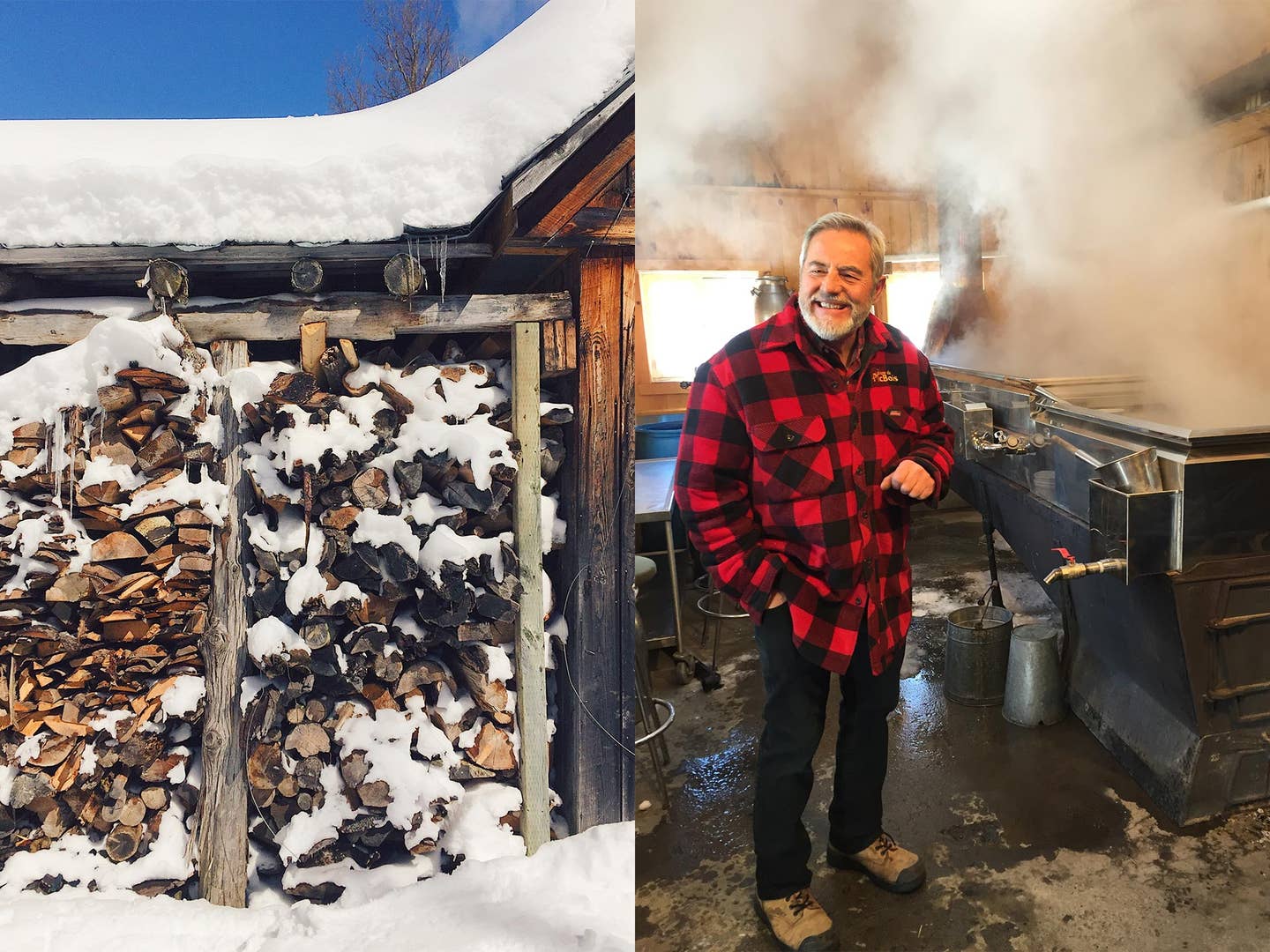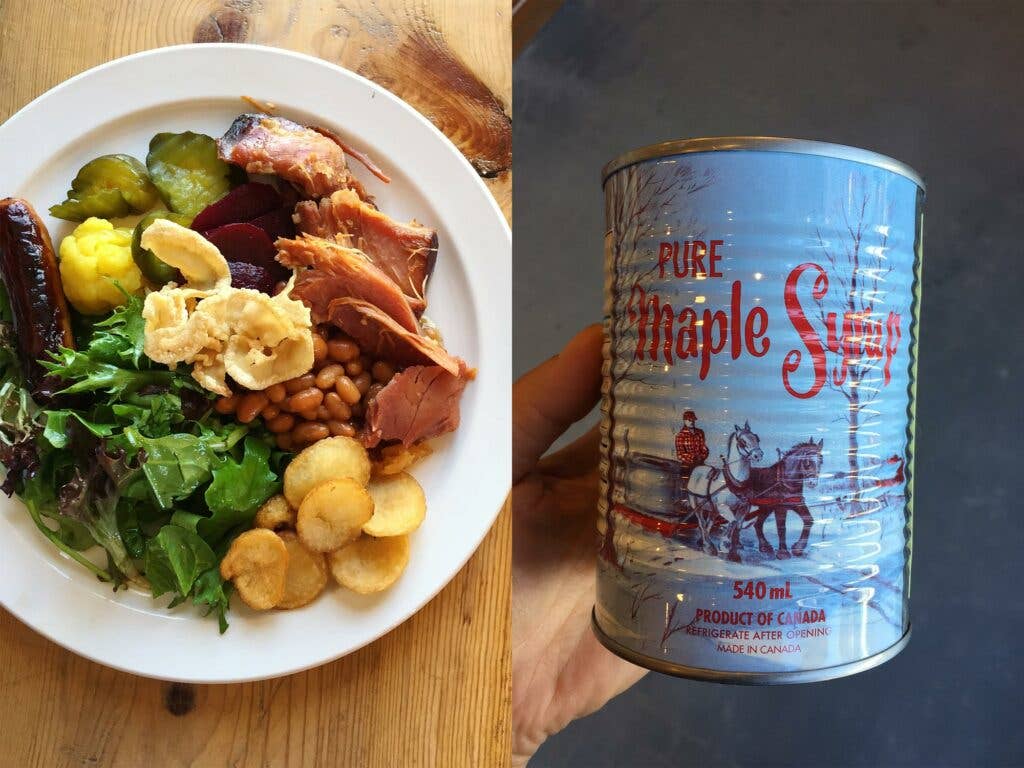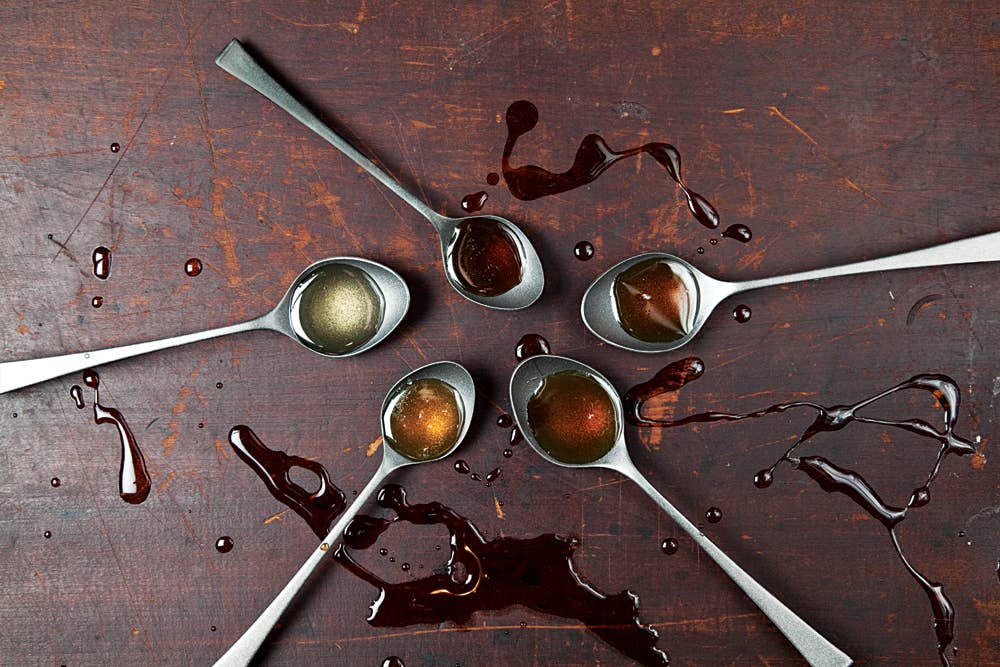
This is How Maple Syrup Gets Made, and What the New Grading System Means
Visiting a Canada sugar shack during the mad early spring syrup rush
In the confusing weather days between late March and April each year—while winter and spring finish battling each other out in their unpredictable annual catfight—something magical happens in the snowy woods of Canada and New England. It’s maple sugaring season, the fleeting time in late winter and early spring when feeling begins returning to the toes of the locals and sweet, fragrant sap starts flowing from their towering maple trees.
For these frantic few weeks, maple farmers work overtime, harvesting the trees' sap, boiling it down to syrup, and hosting the largest number of visitors at their sugar shacks (in French: cabanes à sucre)—the cabins and houses where the watery sap is collected, converted to syrup, and sometimes bottled.
On the perfect day, a visit to one can feel like an afternoon at the North Pole, complete with smoking chimneys, snow-covered trees, and maple-laden meals. The latter often involves dishes like like tender pink maple roasted ham, maple baked beans, oreilles de crisse—deep-fried crispy pork jowls—or maple taffy, the fresh syrup frozen into semi-solid, lollipop-like form on a bed of fresh snow.
How Maple Syrup Gets Made
Though global warming has made the harvest timing a bit more unpredictable in recent years, nature typically knows the precise right moment to start releasing maple sap, a dance of freezing and thawing temperatures called the “sap run.” For sap to flow, the daytime temperatures must creep at least a few degrees past freezing, but the nighttime must return to—and remain at—freezing temperatures.
Warmer weather means the trees begin to reabsorb water from the ground, and since branches freeze faster than thick trunks, the re-freezing of the branches by night creates pressure in the trunk, which allows the sap to concentrate and be collected at the base of the tree.

Though maple trees can grow many places, this ideal temperature limbo happens most reliably in New England and southeastern Canada, with southern Quebec producing around 87% of maple syrup globally. Here and in most places, maple is usually harvested one of two ways—old school, where the liquid is collected by simple buckets dangling beneath the taps, or new school, in a network of interconnected plastic tubes that funnel maple right into the sugar shack.
Blink and you’ll miss maple sugaring season: The sap runs for only about 12 to 20 days, and farmers only have a few chances to “tap” (drill small holes into the base of the tree trunks then hammer small spouts into them) without over-tapping and hastening the production of the tree.
Decoding Maple Grades

No matter the grade, all maple syrup is harvested, boiled, and bottled the same way. The only thing that makes styles of maple syrup different is the time of season in which they are harvested: earlier in the season, the trees produce the lightest sap, and later in the season it darkens and becomes more robust tasting. There really is no “better” maple: All that matters is which you prefer.
The U.S. and Canada used to have different grading systems (you might remember “Grade B” or “No. 1”); now they’ve synced up with new terminology, though the recent changes are a little confusing in an “everyone gets a trophy” sort of way.
Grade A Golden, Delicate Taste
Formerly in U.S.: Grade A Light Amber. Formerly in Canada: No. 1 / Extra Light or Extra Clear
The lightest (honeylike) colored and most delicate tasting maple syrup (with at least 75% light transmission through the syrup), this variety comes from the earliest harvests of the season.
Grade A Amber, Rich Taste
Formerly in U.S.: Grade A Amber or Medium Amber. Formerly in Canada: No. 1 / Light, Clear, or Medium
Maple categorized in the second grading tastes a bit richer and looks a shade redder in tone than amber syrups. The syrup allows between 50 and 75% of light to shine through.
Grade A Dark, Robust Taste
Formerly in U.S.: Grade A Dark Amber. Formerly in Canada: No. 1 Medium, Amber, Dark
The third tier of maple begins to look brown in color and has a more concentrated, robust flavor. At this point in production, 25 to 50% of light transmits through the syrup.
Grade A Very Dark, Strong Taste
Formerly in U.S.: Grade B. Formerly in Canada: No. 2 Dark This has the darkest color and strongest, most intense flavor of all maple syrups, harvested latest in the year and allowing less than 25% of light to shine through. You'll rarely see this maple on shelves, as it's typically used to make candies and other maple-flavored products.

Keep Reading
Continue to Next Story










